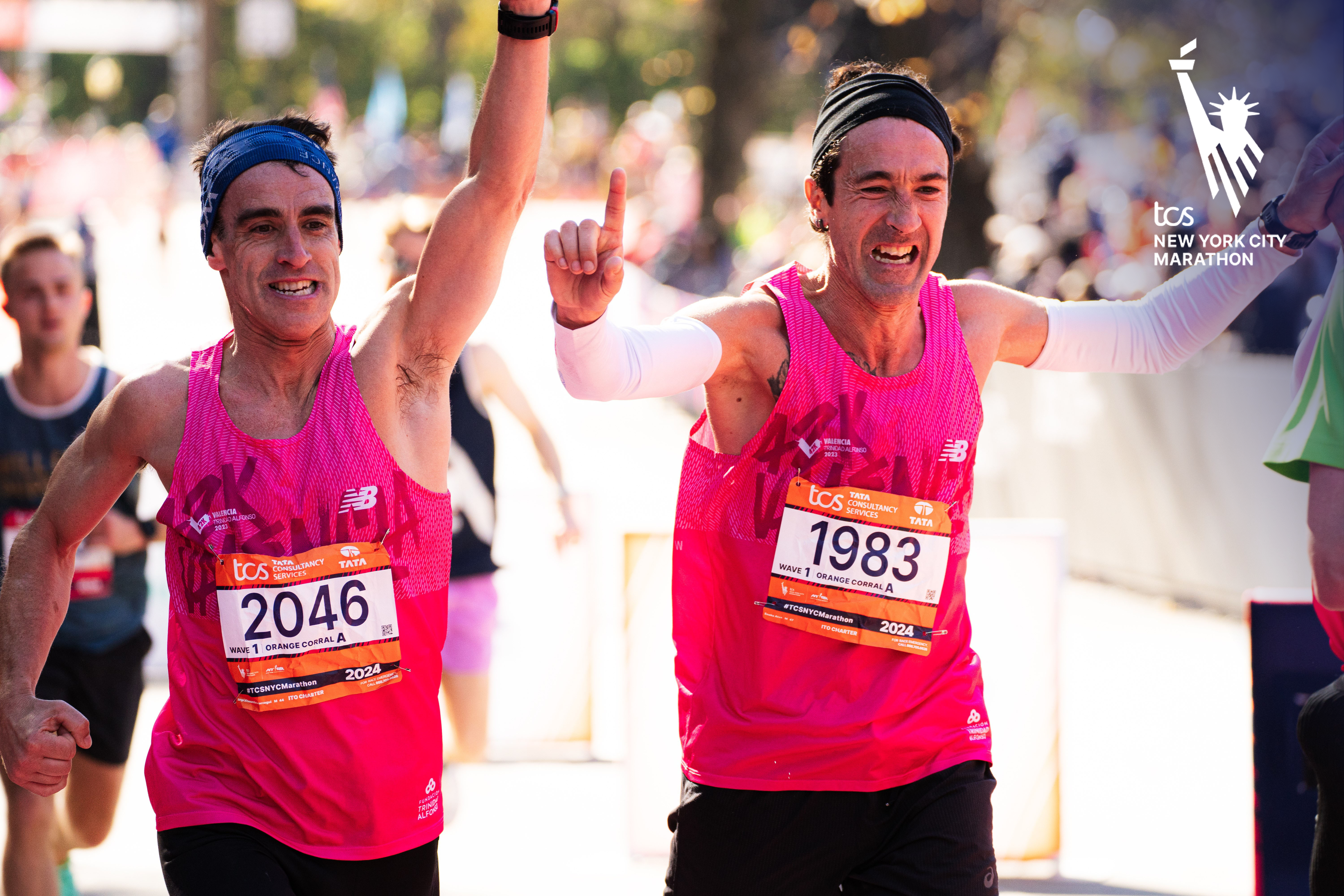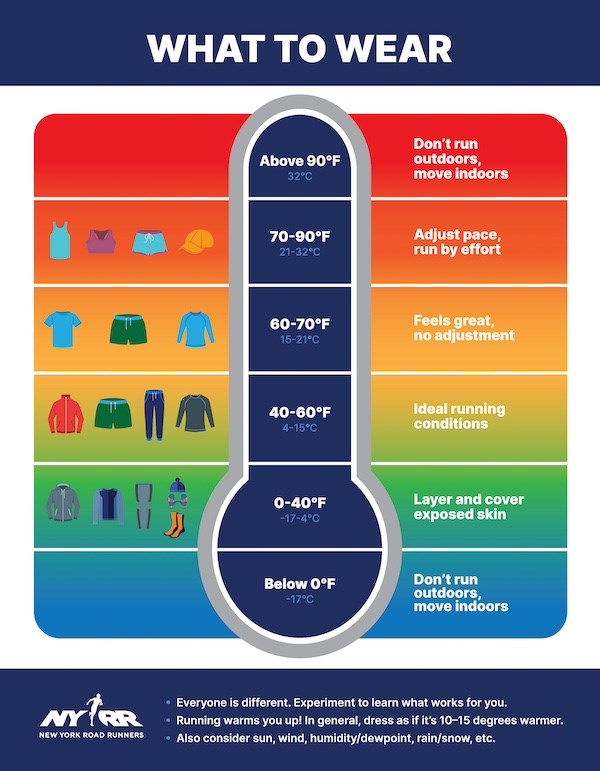Marathon Training FAQs

 This article is by Roberto Mandje, NYRR’s Senior Advisor of Engagement and Coaching.
This article is by Roberto Mandje, NYRR’s Senior Advisor of Engagement and Coaching.
If you’re training for the TCS New York City Marathon, you’re ramping up your mileage and long runs now. Even if you’re training well and making fitness gains, you probably have questions. Read on for answers!
How far should my long runs be?
There’s no magic distance for marathon long runs. Instead, think in terms of the sum of your training, measured by the quality and frequency of your long runs throughout your 12-week to 16-week buildup.
Focus on consistency and recovery, rather than one flashy number. If you run longer than usual once a week or every two weeks for 12–16 weeks of training, you'll be well prepared.
Many training plans build up to long runs of 18–20 miles. This is considered long enough to train the body to become efficient at fueling and to simulate the fatigue the legs will feel at the end of the marathon, but not so long that you can’t recover afterward and keep training consistently.
Warm, humid weather adds to the challenges of long runs, so you should consider running by time rather than distance in these conditions. Many plans recommend that you run no longer than three hours or 3:10, even if that means cutting back on your planned distance. Your body will reap the same benefits it would from covering more miles in less time.
Pay attention to how your body feels after your long runs. If you're still exhausted a few days later, you may have pushed yourself too hard for too long. Ease up the pace or shorten the distance on your next long run.
What should I wear in training?
Wear lightweight and light-colored clothing made from tech fabrics that wick moisture from the skin, allowing it to evaporate. A visor or hat will protect your face and eyes. You may want to bring along an extra layer in case the weather changes.
Remember to wear sunscreen, even on overcast days. View the chart below for more guidance.

Should I ever skip a long run?
While it’s important to get in your long runs as consistently as you can, your safety and health should always be your top priority. You should never run during an electrical storm, in extreme heat (see below), or when you're ill.
When you run in very warm conditions (90°F/32°C or above), you risk dehydration even if you're drinking regularly because it's so much harder for the body to keep up with the fluids you're losing through sweat. If it's also humid (above 75%), your sweat won't evaporate as easily, so you risk overheating. Find more weather-related running info and tips here.
Always check the temperature, real-feel, and humidity before heading out. If these numbers are excessively high, move your long run indoors to a treadmill if you can, reschedule it for a different day or time, shorten it, or skip it altogether and move on with your training.
What should I eat and drink on long runs?
Use your long runs to practice replenishing the fluids and electrolytes (sodium, potassium, and chloride) you lose through sweat and the calories (especially carbohydrates) expended by running. You won't completely replace what you've lost, so plan to drink and eat more after you finish.
Sports drinks help replace electrolytes, fluids, and calories. Try different sports drinks to determine which ones you tolerate and enjoy. You may want to try salt tablets if you're a heavier or saltier sweater, meaning that when you finish your runs, you'll see salty rings on your clothing and body.
Similarly, try different energy gels, bars, shots, chews, and other options. These products are designed to replace calories and carbohydrates without upsetting your stomach, but everyone is different in how they handle them, so take the time to figure out what works best for you.
The 2025 TCS New York City Marathon course will have purified water, Gatorade® Endurance Formula™ Lemon-Lime Flavor, and Maurten Gels.
Have a fueling and hydration plan. I fuel and hydrate every 25–28 minutes during a long run, sometimes more often on warmer days. Experiment to find out what works best for you, and stick to it, so your body becomes more efficient at processing what you're taking in. Without a plan, it's easy to "forget" to eat and drink regularly, and your performance and health can suffer.
Remember to hydrate and fuel well the day and night before your long run and the morning of. Choose foods that are familiar to you and that don't typically upset your stomach.
If I'm in pain, is it an injury?
During marathon training, it's normal to feel some soreness as we ramp up the miles and test our muscles in new and different ways, especially if we begin training after a long break. That soreness is simply your body reacting to the demands placed on it. After a few days to a week, it should subside and allow you to carry on training.
Injury, on the other hand, typically comes on suddenly and often can be traced to a specific run or activity. It’s also more specific in its location in the body. Unlike soreness, the pain of injury can feel achy, sharp, throbbing, and even painful to the touch. Also, unlike soreness, it can persist for a few days to weeks or longer.
If you feel an injury-type pain, take a day or two off; you can also ice, massage, and elevate the affected area and take over-the-counter pain medications as directed. If these measures don't help, see a sports medicine expert. For more about injury prevention and treatment, check out our Runner Resources.
Stay tuned for part two, where we’ll talk about tapering, race day pace, and more!
If you haven't yet chosen a training plan for the 2025 TCS New York City Marathon, consider NYRR x Runna, a personalized plan designed to help you hit your goals.
You May Also Like...
Meb's Tips for Running the 2025 TCS New York City Marathon
How to Start Training for the 2025 TCS New York City Marathon
[Video] How to Safely Transition to Warm Weather Run Training | Move Better with HSS




